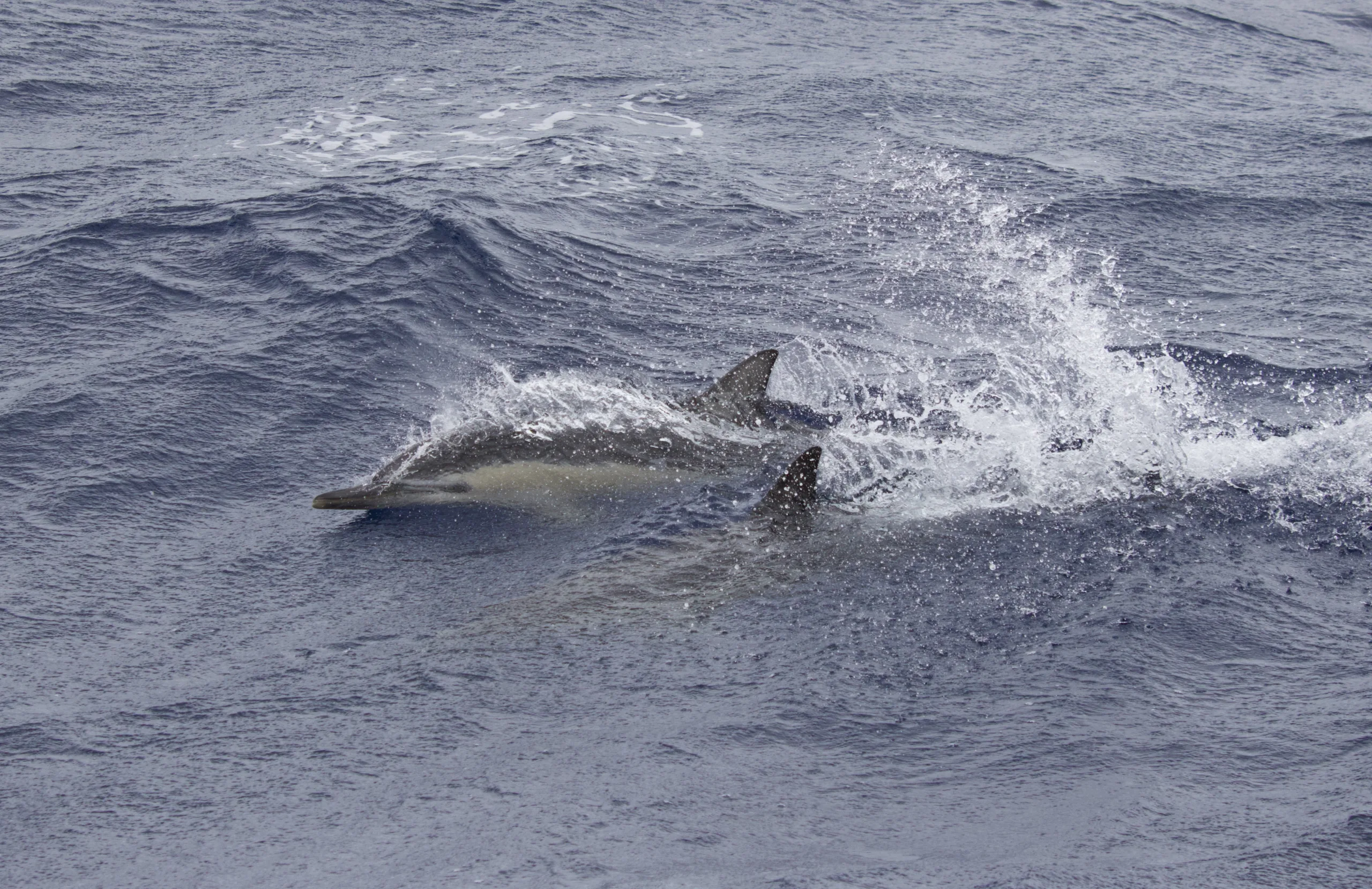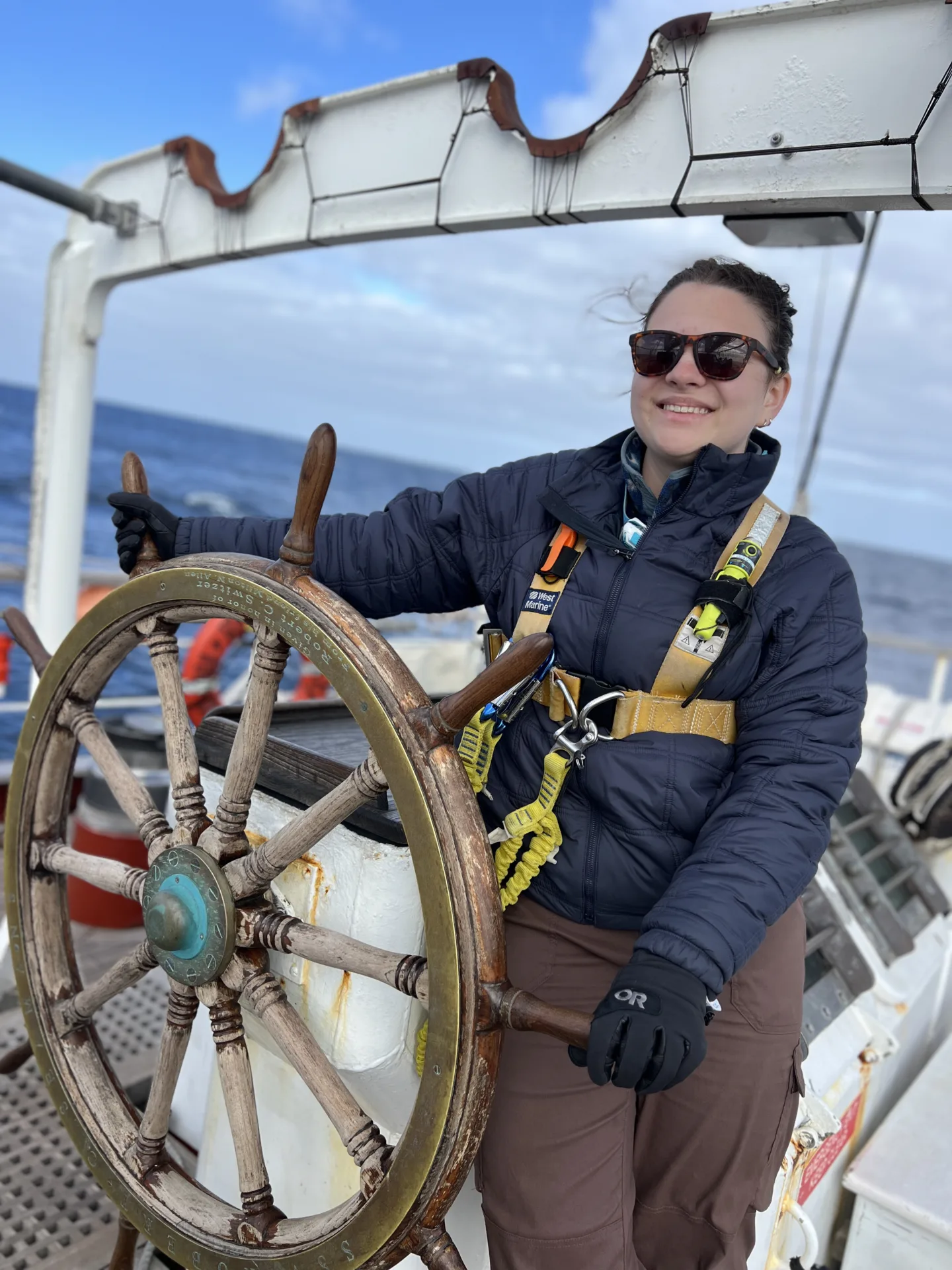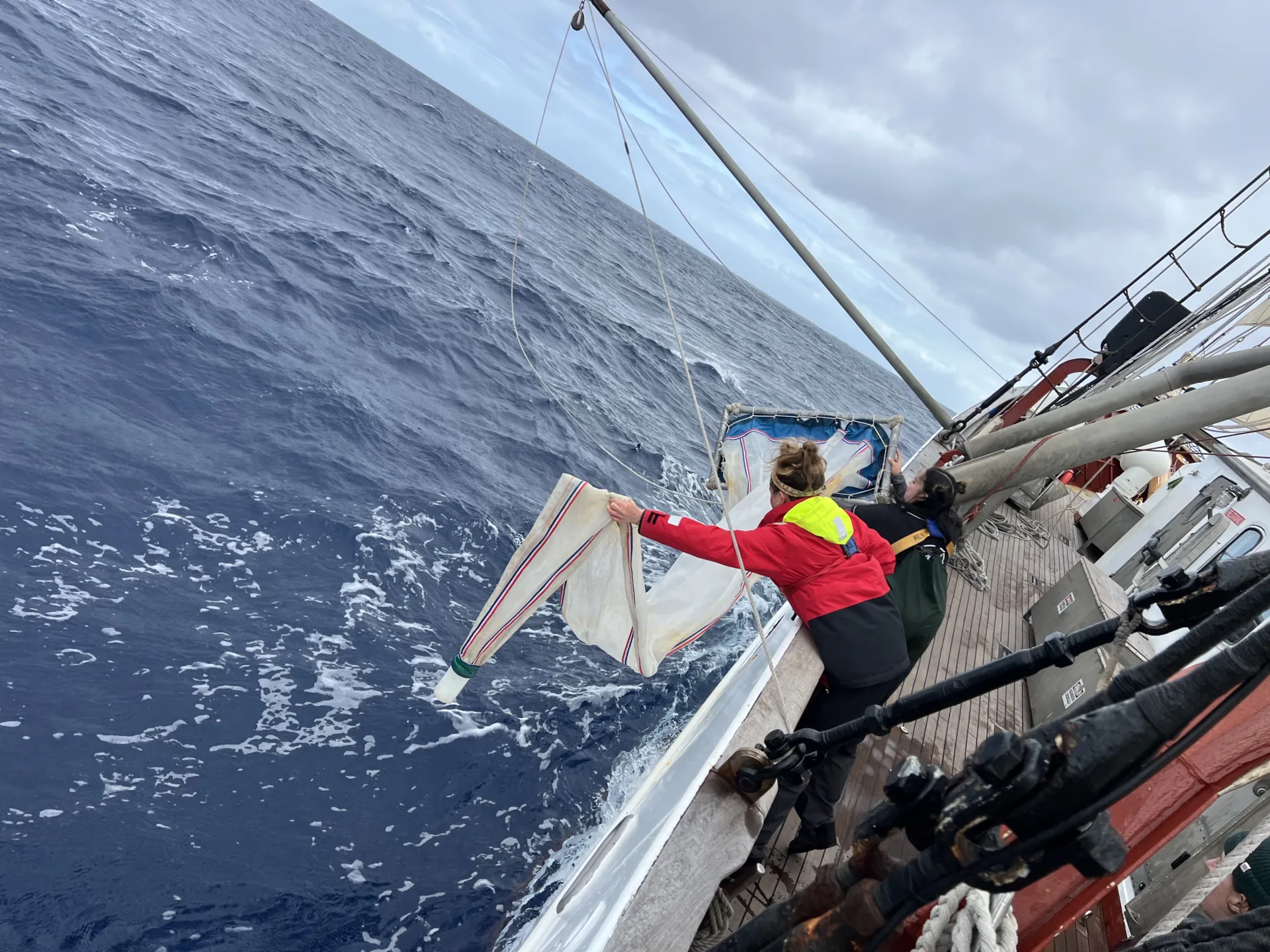Programs Blog
“Current” Events

Date: April 16, 2025
Time: 1347
Location: Southern South Pacific Gyre (40˚ 04’ S, 159˚ 55’ W)
Weather: Chilly & windy (force 6) with a bit of rain
Ahoy! (Yes Dad, that was for you) Once again, it’s Georgia, now reporting from the South Pacific Gyre! As Ella reported yesterday, we just crossed the International Date Line, throwing everyone’s schedules a bit off rhythm. To be fair, time aboard the SSV Robert C. Seamans is entirely relative. Some days, you might be falling asleep at the lunch table, others you might be bright-eyed at 0200, sequencing DNA in the lab! I can definitely say that I have been in both of those situations within the past week. Yet, it’s totally worth it. Getting the announcement that there’s a pod of dolphins off the starboard bow beats everything (this happened about thirty minutes before writing this post!).
As much as I love all the different parts of this voyage, the days that I’m assigned to the science deck hold a special place in my heart. Being able to conduct and process oceanographic research aboard a moving vessel honestly feels like a bit of a fever dream at times– especially during dawn watch (0100-0700). Depending on the day, our tasks can vary from equipment deployment to alkalinity tests to copepod identification. However, the one thing that you can always rely on doing is our science hourlies. In a nutshell, these are short pieces of data entry that are done every hour to record environmental information at that specific point in time. Variables include, but are not limited to, sea surface temperature, salinity, depth, and current speed/direction. Of course, this information is collected and stored continuously (given that the equipment is behaving), we just use the hourlies as a quick way of comparing the different types of data across the day.
One variable that has specifically caught my attention, and not just because I was asked to write about it, is current speed and direction. Also referred to as sub-surface velocity, this variable tells us critical information about how the water is moving below the surface of the water. On the Seamans, we use a piece of equipment attached to the hull called an Acoustic Doppler Current Profiler (ADCP) to measure this velocity. To do so, the tool transmits low-frequency sound “pings” into the ocean, which bounce back off particles suspended in the water column– this is known as the Doppler Effect. These waves boomerang at a higher frequency, allowing the ADCP to differentiate between the returning and sending waves. This allows for the tool to measure how long it takes for certain pings to return to the ship, as farther ones return later. Since particles move at the same speed of the water that carries them, the difference between returning and sent waves can be used to calculate water speed. Similarly, this process can also be used to determine the direction at which the water is flowing.
As interesting as the underwater workings of currents are, the big question behind it all is: why do we care? Globally, our ocean currents play critical roles in the movement of heat and nutrients, allowing marine habitats to function and thrive. As climate change continues to accelerate, it is critical that we understand how our currents are shifting over time. In many cases, global currents are slowing with the warming climate, reducing the efficiency of heat and nutrient distribution. Although it may not seem like it, shifts in these environmental factors hold crucial implications for the health of the underwater word. In other words, as the reliability of heat and nutrients depletes, so does the stability of our marine ecosystems.
Okay, enough with all of the science-talk! As much as I would love to talk your ear off about our oceanographic research, I must limit myself at some point.
As we come up on two-weeks aboard the Seamans, it’s crazy to imagine that we were in Aotearoa New Zealand not too long ago. Wild how time works. Or doesn’t work? As I mentioned earlier, my concept of time is just a tad messed up. Honestly, I’ve given up on trying to make it make sense. The best part of being at sea is that it forces you to live in the moment, and I am forever grateful for that. Here’s to a voyage full of living up every second!
–Georgia Akins, Macalester College, A Watch
Time for shout-outs!
To my parents: Life at sea has been nothing short of uneventful! It’s safe to say that I have finally adjusted to living such a different life than I am used to. I did get a little seasick the first day, but luckily, there are some truly amazing people aboard that helped to take care of me. I’m all better now! Love you and miss you loads!
To my sister: I am so sad to be missing all your senior events this spring, especially your prom. I just know that you are absolutely going to shine in your dress, you are simply that gorgeous. I am so proud of everything you have accomplished and can’t wait to rep the UGA merch. Please take lots of pictures for me! <3
To the S-321 crew: Thank you so much for making this such an amazing experience so far! It has been truly fantastic working with and getting to know you all over these past few weeks. Looking forward to the rest of our voyage!


Recent Posts from the Ships
- Ocean Classroom 2024-A collaborative high school program with Proctor Academy
- Collaborations and Long-term Commitments: SEA’s Caribbean Reef Program Sets a Course for Coastal Programs that Compliment Shipboard Experiences.
- Sea Education Association students prepare for life underway using state of the art nautical simulation from Wartsila Corporation.
- SEA Writer 2022, Magazines From the Summer SEA Quest Students
- Technology@SEA: Upgrades Allow Insight into Ocean Depths
Programs
- Gap Year
- Ocean Exploration
- High School
- Science at SEA
- SEA Expedition
- SEAScape
- Pre-College
- Proctor Ocean Classroom
- Protecting the Phoenix Islands
- SPICE
- Stanford@SEA
- Undergraduate
- Climate and Society
- Climate Change and Coastal Resilience
- Coral Reef Conservation
- Marine Biodiversity and Conservation
- MBL
- Ocean Exploration: Plastics
- Ocean Policy: Marine Protected Areas
- Oceans and Climate
- Pacific Reef Expedition
- The Global Ocean: Hawai'i
- The Global Ocean: New Zealand